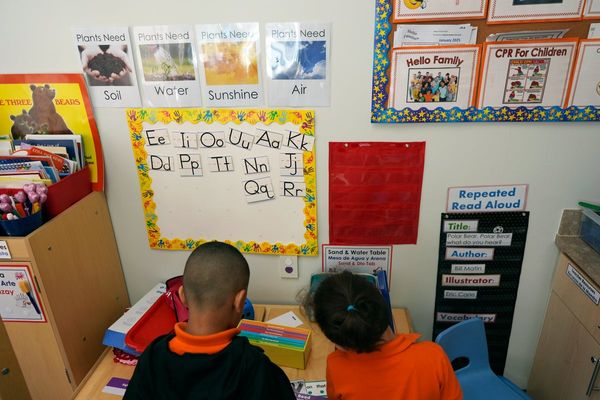
I’m floating in a communal pool that’s heated to a balmy 34C and I couldn’t give a stuff about anything. All the usual stressors like deadlines, bills and traffic jams melt away under the mineral-enriched jets pummelling my lower back at Soak Bathhouse on the Gold Coast.
But I vowed to try everything during my 90-minute “soak and sip” session – and that includes the icy cold plunge pool. I brace myself. It’s like leaping into Antarctica. Catching my breath, I hastily retreat to the steam room, where the more sensible bathers are breathing in warm, eucalyptus-scented mist.
In this time of contagion, it might seem odd that public bathhouses are back – but they’re booming. Despite Delta and Omicron’s best efforts, at least four major new facilities opened in Australia last year, including Queensland’s Soak, the Bathhouse and Talaroo Hot Springs and Melbourne’s Sense of Self. This year, another communal bathing facility, also called the Bathhouse, opened in Douglas Park, south-west of Sydney.
Operators including Soak’s CEO, Alexis Dyson, claim that after 18 months of wearing masks, dodging hugs and handshakes and hunkering down at home, people are yearning to get up close and personal with others. “We’re seeing a huge focus on wellness and mental health generally,” she says. “In particular, people are feeling the need to connect with others.”

Communal bathing dates back to Neolithic times, when nomadic tribes sloughed off the strains of the hunt in natural hot springs. This time-honoured tradition finds contemporary expression in many different cultures – think Turkish hammams, Japanese onsen, South Korean jjimjilbang and Finnish saunas. For many Australians, though, the closest we’ve come to communal bathing is sharing the childhood tub with a sibling, or standing under beachside showers to banish sand and salt. For the most part, bathing is a solitary, functional activity, often performed under time pressure, as we prepare for something more important – a date, a meeting, a day at work.
But what if bathing was the main event? Melbourne’s Sense of Self co-founder Mary Minas still recalls the wonderment she felt as a 20-year-old entering a hammam at a Paris mosque with a French-Tunisian friend. “We did a ritual that she would do with her mum weekly as a kid growing up,” Minas says. It stretched over six hours instead of the one Minas had banked on, and aspects of it were confronting.
“My friend’s telling me ‘It’s nude’ and I was like ‘Oh shit’.” But seeing unapologetically unclad bodies in all shapes and sizes was a revelation, and Minas was hooked. “I thought to myself, ‘Wow, this is the first time I’ve felt really OK about my body,’ having grown up surrounded by diet culture.”
Beyond the benefits of relaxation, social connection and body positivity, research suggests there are other reasons to take the plunge. A study published in the journal Heart in 2020 found that tub bathing has preventative effects against cardiovascular disease; other studies have credited heat therapy with antidepressant effects and a reduced risk of dementia and Alzheimer’s disease.
A 2020 review published in the Physiology of Thermal Therapy found that regular sauna or hot tub bathing had comparable health benefits to low or moderate intensity aerobic exercise, such as walking, jogging and cycling. However, co-author Charles Steward warned couch potatoes against complacency. “Regular saunas or baths are unable to replicate all the health benefits of exercise training, such as promoting fat loss and increasing muscle mass,” he wrote in the Conversation.

As someone who wears flip-flops at the public pool and around shared campground facilities for fear of contracting plantar warts, I wonder what hazards hide amid the bubbles. According to Edith Cowan University’s environmental health leader, Dr Edmore Masaka, water-holding environments may harbour pathogens such as legionella and pseudomonas – opportunistic bacteria that cause disease mainly in people with underlying health conditions. “Combine that with warmer temperatures and you actually increase the potential for the growth of certain types of bacteria,” he says.
However, Masaka points out that the Australian standards that apply to the design of public facilities, along with the filtration, disinfection and monitoring requirements imposed by state governments and implemented by local authorities, go a long way in controlling outbreaks of pathogen-caused disease. He is unaware of any outbreaks of illness arising from bathhouses in Australia. Public pools and splash parks, on the other hand, have been linked with cryptosporidium and other infections.

Covid transmission is possible in communal bathhouses, as with any other indoor gathering space, but whether higher humidity changes the risk profile is uncertain. “No specific research with Covid-19 has determined whether this makes a significant difference when compared with other environments,” Masaka says.
Both Dyson and Minas say they have extensive hygiene protocols. As for finicky wart-fearing folk like me, we can either wear our own footwear (Soak) or slip on a provided pair of slides (Sense of Self). “It’s just to keep everyone safe,” Minas says, adding that changing shoes is also “part of the ritual”.
Minas cautions that high temperatures make bathhouses unsuitable for pregnant people, but most others can partake. As for the reason to do so, she says: “Even if it gets you to stop thinking for a few moments … that’s a win.”
• This article was amended on 25 April 2022. An earlier version said a study that found tub bathing has preventative effects against cardiovascular disease was published in 2020 in the BMJ. It was published in a different journal, Heart.







